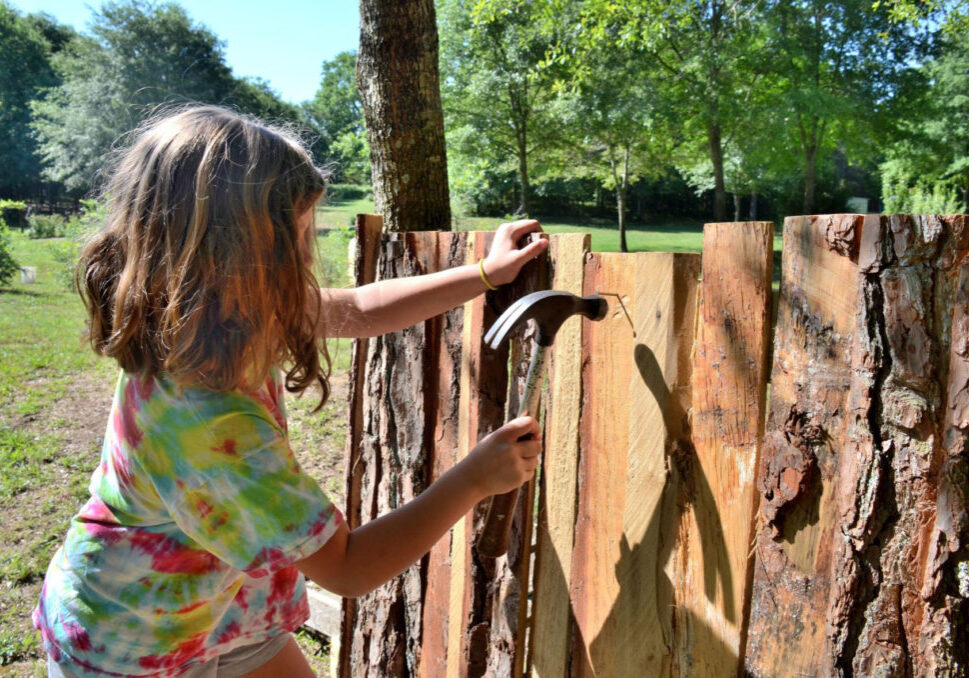What does constant exposure to media mean for today’s youth who must navigate the barrage of media in almost every aspect of their lives? What are the implications for parents, teachers and mentors who are relatively new to this media environment constantly vying for our attention? How can we help our children be media literate, which, according to the National Association for Media Literacy Education (NAMLE), means they possess the ability to access, analyze, evaluate, create and act using all forms of communication.
In 2009, only about half of teens used social media every day, according to Dr. Jean Twenge, professor of Psychology at San Diego State University and author of four books focusing on how young Americans have changed and what that means for our future. In 2017, 85% of young Americans used social media daily, according to Dr. Twenge. A 2022 Pew Research Center poll found that 95% of teens said they used some social media and about a third say they used it constantly.

Teaching children to clearly evaluate information is crucial
Social media is created by a wide breadth of people and organizations, some of which have appropriate background knowledge and academic credentials, although many do not. A 2024 UNESCO (United Nations Education, Science and Cultural Organization) international study published in collaboration with Bowling Green State University revealed that 62% of surveyed creators said they don’t vet the accuracy of content before sharing it with their followers. Roughly one-third of influencers said they shared information without checking its validity or if it originated from a trusted source. In contrast, 37% said they verified information with a fact-checking site before circulation.
In the face of this barrage of information and misinformation through social media channels, teaching our children to analyze and evaluate the information they receive is crucial to their ability to make informed decisions, form positive self-images and interact effectively with their world. They must learn to become critical consumers of the overabundance of media within their reach.
Democracy depends on media literacy
Media literacy in our current tech-savvy world is the grounding of our democracy. “It’s true that media literacy is often linked to detecting and flagging fake news,” says the Organization of Security and Co-operation in Europe (OSCE) Representative on Freedom of the Media, Teresa Ribeiro. But there’s much more to it than that. “It’s about empowering citizens to navigate the digital landscape with discernment and critical thinking, ensuring informed democratic participation,” Ribeiro says.
If we have a conversation about “news” gleaned from the media, what are the questions we can ask to learn about the viability of the content? Although the ways we search for and receive information have changed substantially over time, the core questions of who, what, when, where, why and how can still apply.
Who is reporting the news you are consuming?
What are the credentials of the author or group presenting this information? Internet domains such as .org (organization), .gov (government), .edu (education) or .com (commercial) identify the type of organization that hosts information or has agreed to have it hosted on their site. Despite these official domains, these websites are not always unbiased sources of information. Keep in mind that humans publish this information and both humans and AI can and do make errors.
What was reported?
Check the facts! There are several reliable fact-checking sources such as Snopes.com, FactCheck.org, and fact checker searches at WashingtonPost.com, NPR.org and Politifact.com. Content on Wikipedia is another online place to start. While information on Wikipedia is not held to any publishing standards, it is often open source reviewed. Pay close attention to opinions and the source(s) supporting them versus facts. Internet search engine results are based on popularity rather than validity.
When was this information first published?
How current is the information? When was the information published or posted? The timing of news can be critical, particularly for current events such as recent natural disasters. Broken links can indicate a topic is older and, in some contexts, no longer relevant.
Where was a media story sourced?
When we read online content, we typically read vertically – top to bottom. Media consumers need to learn to read laterally. Lateral reading means as content is read, you leave open another tab and do some fact-checking as you are reading the content. Look beyond the first page of the sites listed that relate to that topic. Lateral checking is critical to the deeper dive to determine the validity of a source, such as who funds and potentially influences the content. This is a job that is traditionally performed by trustworthy authors and editors but is not currently part of social media content posting. An excellent example of lateral reading can be found in John Green’s YouTube post “Check Yourself with Lateral Reading: Crash Course Navigating Digital Information #3.”
Why is a particular media piece published?
What are possible angles and emotional appeals of a media piece? Could a particular group or individual influencer have an ulterior motive (profit, power) for you to believe and act on the information they present?
How has the media piece been presented?
What production choices such as framing, lighting, camera position and music have been used? All these factors plus word choice for the piece can influence media consumers’ perception of the subject. For instance when articles that report a group of protesters composed largely of BIPOC individuals describe this group as “a mob” and protesters who are mostly white are described simply as protesters, or persons of color are lit with dark or low lighting in interviews or media clips while white people are brightly or flatteringly lit in comparison, this can subtly influences media consumers to feel a certain way about article subjects that is not objective.
In the modern world, media literacy is an essential skill for children to thrive both academically and socially. By taking an active role in their media consumption, you are helping them to develop the skills to critically evaluate the content they encounter. Using the questions outlined here and providing trusted fact-checking and media resources, having conversations with your child and demonstrating appropriate modeling of healthy media habits, you can help ensure your child is a thoughtful, responsible, informed media consumer.
Resources for Parents and Educators
Common Sense Media (commonsensemedia.org): A widely respected platform that offers reviews, recommendations and advice on how to navigate media and technology in healthy and constructive ways. Provides a wide range of guides on media literacy, digital citizenship and managing screen time for children of all ages.
National Association for Media Literacy Education (namle.net): Provides resources and research for educators and parents looking to foster media literacy, including an array of tools, workshops and curriculum guides aimed at improving students’ media literacy skills.
National Public Radio (npr.org): Offers insightful articles and podcasts related to media literacy and the impact of digital media. The organization’s coverage of media issues can help parents stay informed on trends and developments in the digital landscape.
Posted in: Parenting, Youth & Teen
Comment Policy: All viewpoints are welcome, but comments should remain relevant. Personal attacks, profanity, and aggressive behavior are not allowed. No spam, advertising, or promoting of products/services. Please, only use your real name and limit the amount of links submitted in your comment.
You Might Also Like...
North State Teens Give Back To Their Communities With Creativity, Hard Work & Love
Thomas W., Yreka Grace P, Chico Grace is 13 years old and is the president of CCC, a Chico club dedicated to educating others about climate change and doing everything […]

Building the Parent-Child Bond
The first and most important relationship we have in our lives is the one with our parents. Children learn how to love, play, interact and resolve conflict through the bond […]

Host Homes Program – A Safe Place For Homeless Youth
Each day in the United States, 50,000-100,000 young people 18-24 years old are either homeless or living in unstable home situations. Research has shown that homelessness can lead to severe […]



